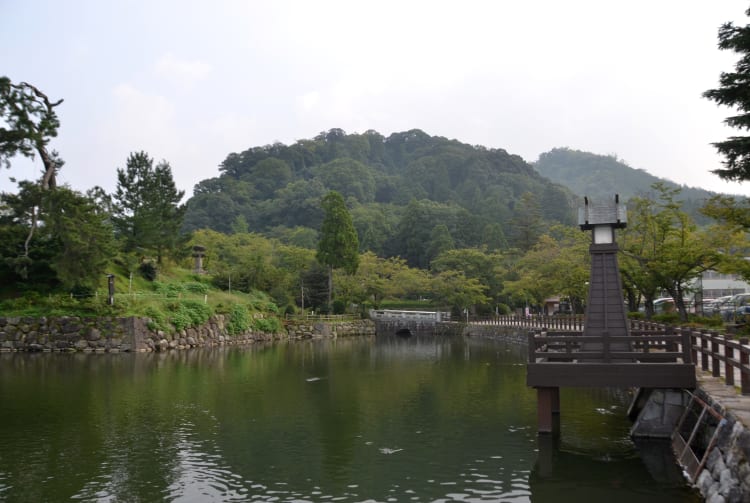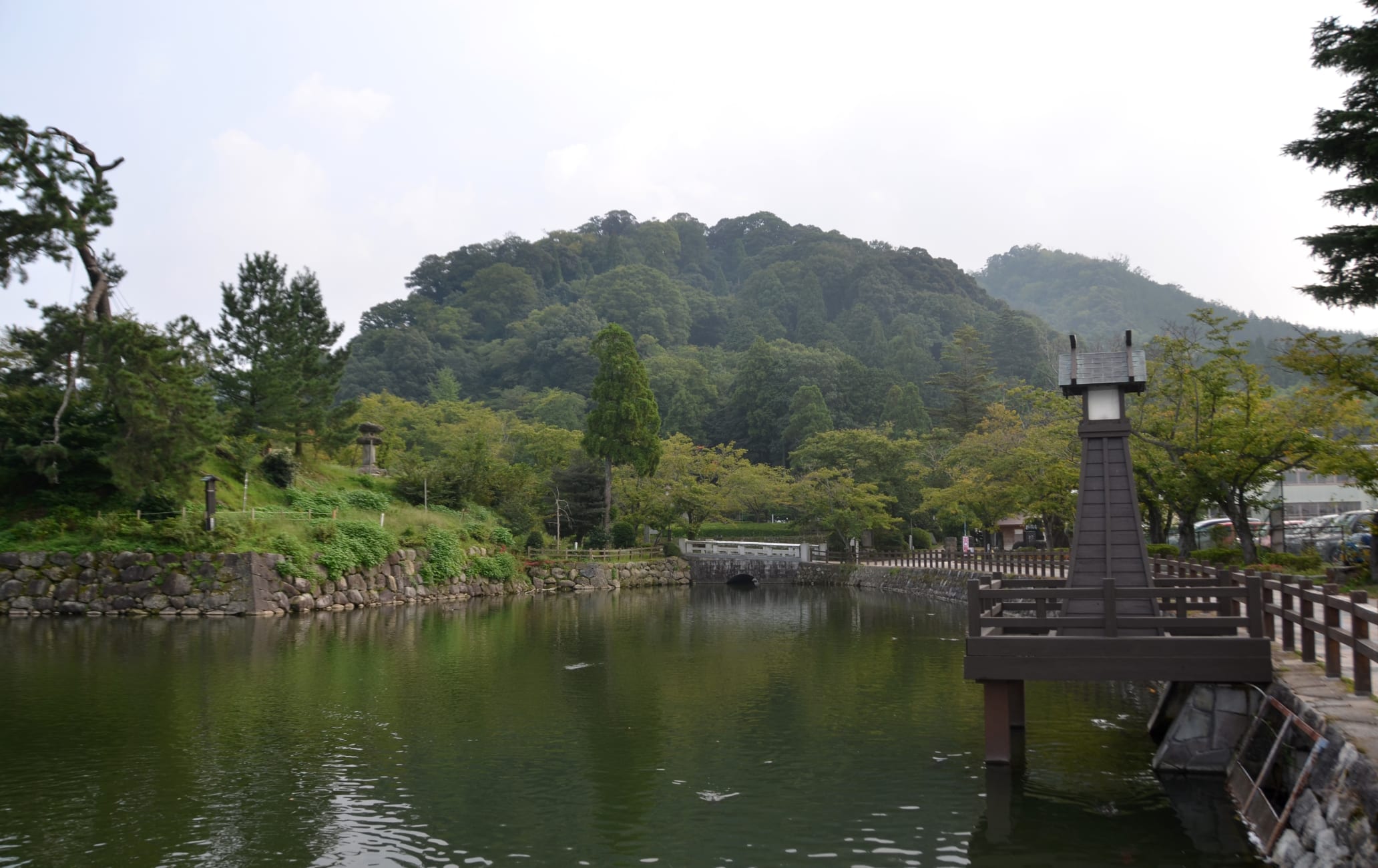Pittoreske Burgstadt mit ungewöhnlich internationaler Verbindung
Das ehemalige Gelände der Burg Shikano und das charmante Burgstädtchen, das die Burg umgibt, blicken auf eine lange und unterbewertete Geschichte zurück. Verbringen Sie hier einen halben Tag und nehmen Sie die Atmosphäre dieses Herrschersitzes vergangener Zeiten in sich auf.
Nicht verpassen
- Spazieren Sie durch die ruhigen und gepflegten Straßen des ehemaligen Burgstädtchens
- Besuchen Sie eine Aufführung des Bird-Theaters
- Genießen Sie die Aussicht von den Ruinen der Burg Shikano
Anfahrt
Nehmen Sie vom Bahnhof Hamamura den Bus Shikano-yuki. Der Bahnhof Hamamura befindet sich an der JR Sanin-Hauptlinie.
Das Gebiet eines großen Generals
Kamei Korenori, Herr der Burg Shikano, wurde 1557 in der Provinz Izumo (heute Teil der Präfektur Shimane) geboren. Er war dem Amago-Clan treu ergeben und verbrachte die erste Hälfte seines Lebens damit, sich seinen erbitterten Gegnern, dem Mori-Clan in der benachbarten Präfektur Yamaguchi , zu widersetzen.
Korenori kämpfte gemeinsam mit seinem Schwager für den Amago-Clan und erzielte im Jahr 1551 einen kurzzeitigen Sieg. Zu einem späteren Zeitpunkt verbündete sich Korenori mit dem großen, japanischen Kriegsherrn Toyotomi Hideyoshi, der nach Jahrzehnten des Bürgerkriegs im 16. Jahrhundert Japan vereinigte. Unter der Führung von Hideyoshi half Korenori dabei, Tottori vom Mori-Clan zurückzuerobern, und wurde als Herrscher des Shikano-Gebiets eingesetzt. Nach Hideyoshis Tod diente Korenori Tokugawa Ieyasu, der im Jahr 1603 der erste Tokugawa-Shogun wurde.
Ein Ort exotischer Geheimnisse
Korenori wurde berühmt als geschickter Unterhändler mit einem großen Interesse am Außenhandel. Er kämpfte bei der Invasion Koreas und erleichterte den Handel mit Siam, dem heutigen Thailand. Inspiriert durch seine Geschäfte mit fremden Ländern, modernisierte er die Burg und nahm an der die Burg umgebende Stadt Verbesserungen vor.
Es heißt, dass er den Namen der Burg nach einem buddhistischen Zentrum in Indien in „Ousha“ änderte und auch Geschütztürme nach Holland und Korea benannte. Seine Burg war voller exotischer Schönheit und sein Vermächtnis kann noch heute in der schönen Gestaltung des Burggrabens erkannt werden. Halten Sie einen Moment inne und füttern Sie den herrlichen Karpfen unter dem wachsamen Auge des stolzen Schwans.
Die Überreste der Burg finden Sie oben auf dem Berg Shiroyama. Der mit Ahorn gesäumte Pfad nach oben zu den Ruinen ist im Herbst besonders schön, während im Frühjahr die blühenden Kirschbäume rund um den Burggraben eindrucksvoll sind.

Ein Stadtbild voller Charme
Ganz in der Tradition ihres ehemaligen Herrn sind die Straßen der damaligen Burgstadt eindrucksvoll und gut gepflegt. Wie auch in anderen Burgstädtchen wurden die Straßen nach den Handwerkern benannt, die hier einst ihrem Handwerk nachgingen. Die Straßen des „Schlossers“ und des „Schreiners“ sind zwei sich kreuzende und authentische Straßen im Zentrum der Stadt. In der Nähe des Besucherzentrums der Stadt befindet sich Koseji, ein reizvoller Tempel der Reinen-Land-Schule des Buddhismus.
Ein neues Vermächtnis
Neben dem Burggraben der ehemaligen Burg befindet sich ein neuer Beitrag zum kulturellen Erbe der Stadt: das Bird-Theater. In der Sporthalle einer ehemaligen Grundschule mit angrenzendem Kindergarten hält das Theater die internationalen Verbindungen der Stadt aufrecht, indem es zwei Wochen im Jahr ein Fest mit Gastkünstlern aus dem Ausland ausrichtet.













































